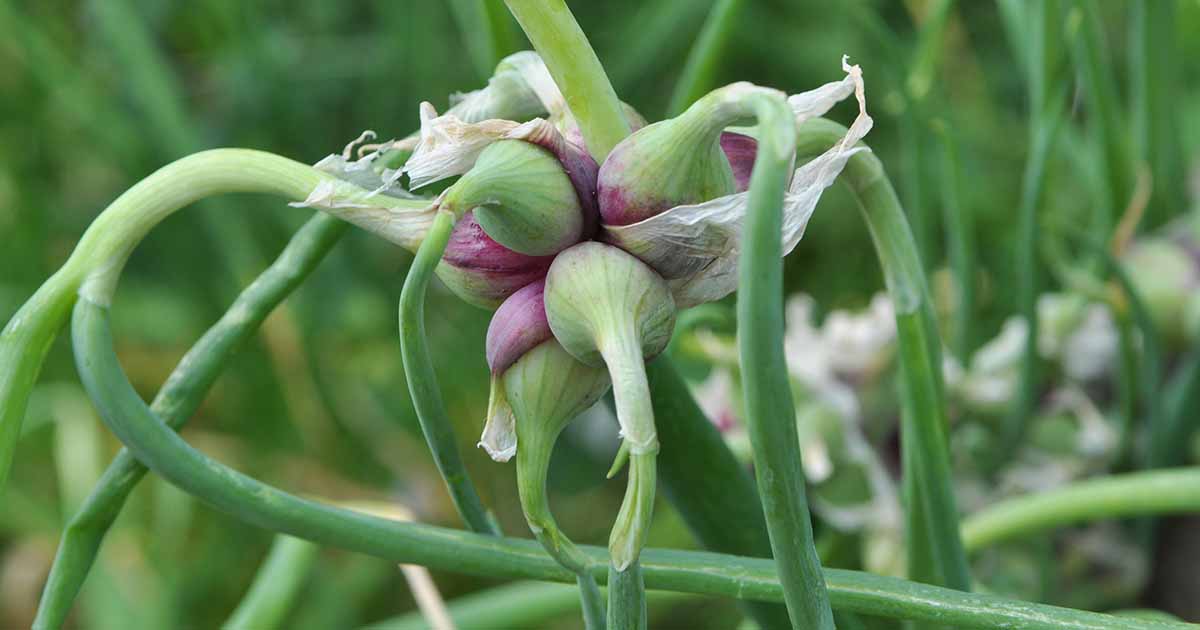akroberts
Deeply Rooted
I got some from someone on BYC. I planted them and gave some to my mom for her garden. I will enjoy knowing that I will have fresh and dried onions for me
Are "walking" onions, sprouting onions?I was cleaning my unheated patio, and found a bag of walking onion bulbils DW had harvested last year. They have begun to sprout, and are amazingly healthy, given that they were harvested 8-9 months ago.
View attachment 49066
View attachment 49068
These are the full grown scallions as of today; they are exceptionally hardy, and begin to reach harvest size about the time tulips bloom. They reach this size the 2nd-3rd year, and multiply gradually... or quickly, if the bulbils are allowed to grow every year. I hate to see my DW's labor go to waste, so if anyone here is interested in growing these, I'd be happy to send some... just PM your address. They will need to be planted promptly, ideally in a location where they will be undisturbed. These have been in the same permanent location since 1997, with little care other than occasional watering when dry.

 gardenerspath.com
gardenerspath.com
Not per se. They are perennial onions, grown primarily for use as scallions. They form only small (but very pungent!) bulbs at the base, which divide every year. The "flower" stalks form clusters of small bulbils, which will root when the stalks fall over... hence, 'walking'. Those bulbils will survive over Winter even if frozen; large ones can be sprouted indoors over the Winter, for fresh chive-like scallions. A worthy addition to the garden; the scallions literally begin to grow during the Spring thaw, and are by far the first fresh vegetable of the year.Are "walking" onions, sprouting onions?
A friend gave me some bulbils of Egyptian Walking onions, which I planted this fall. I have never grown perennial onions and know nothing about them. Are EW onions a variety of walking onion? Or just another name for walking onions?Not per se. They are perennial onions, grown primarily for use as scallions. They form only small (but very pungent!) bulbs at the base, which divide every year. The "flower" stalks form clusters of small bulbils, which will root when the stalks fall over... hence, 'walking'. Those bulbils will survive over Winter even if frozen; large ones can be sprouted indoors over the Winter, for fresh chive-like scallions. A worthy addition to the garden; the scallions literally begin to grow during the Spring thaw, and are by far the first fresh vegetable of the year.
Just one variety, although the two terms are often used synonymously. I grow several others, including Catawissa (which is also fairly common in garden circles) and a few other heirlooms. A few of the heirlooms have white bulbils (much smaller than the red or tan bulbils) and are correspondingly smaller, somewhere between scallions & chives sizewise.Are EW onions a variety of walking onion? Or just another name for walking onions?
So these walking onions are used more as scallions, for the green stems? They don't grow bulbs beneath that you'd use like a regular cooking onion? Please forgive my total lack of knowledge here, onions are really an unknown to me. I've seen something at hardware stores in spring called 'Multiplier' onions or 'Potato' onions - are these walking onions too, and not used for the bulbs?Just one variety, although the two terms are often used synonymously. I grow several others, including Catawissa (which is also fairly common in garden circles) and a few other heirlooms. A few of the heirlooms have white bulbils (much smaller than the red or tan bulbils) and are correspondingly smaller, somewhere between scallions & chives sizewise.
The white-bulbed walking onions - although they do produce bulbils - multiply more rapidly at the base, forming a dense 'nest' in a few years. I once experimented, dividing a ground clump of small bulbs & Fall planting them like garlic. Each one produced one or two nice 1" bulbs with thin skins, which DW used in soups.
Although walking onions are not normally used for their bulbs, I've experimented with Fall planting some of the larger bulbils individually. They produced 2-3 small pink bulbs the following year. Those bulbs keep very poorly, but are INCREDIBLY pungent. I had intended to try dehydrating those for onion powder, but disaster destroyed those plantings. Sadly, due to garden space reduction, I am unlikely to try again.
And unless I find homes for several of my perennial onions, I will be forced to turn them under next year.At the very least, I will need to extricate them from the grass which has overwhelmed them, and move them elsewhere. I will provide more info on those in a future post.